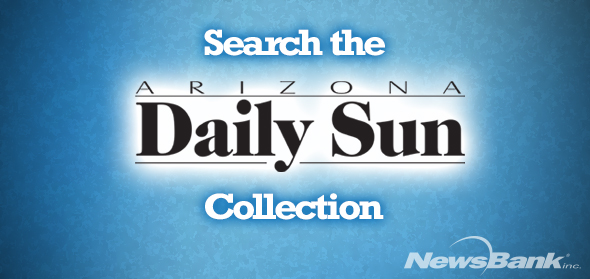Arizona Daily Sun Collection
Explore Flagstaff history through local news, events and people with the Arizona Daily Sun Collection. Search current and archived issues with full-color newspaper pages, full-text articles and content only published online. As of April 1, 2023, an image edition of the Arizona Daily Sun is available, offering a replica of the full print edition online, available as soon as the print edition is released. Archived text articles of the Arizona Daily Sun are available from May 1, 2005 to the present.

